Love in the Age of Cartoons- a look at Alec Robbins' Mr. Boop
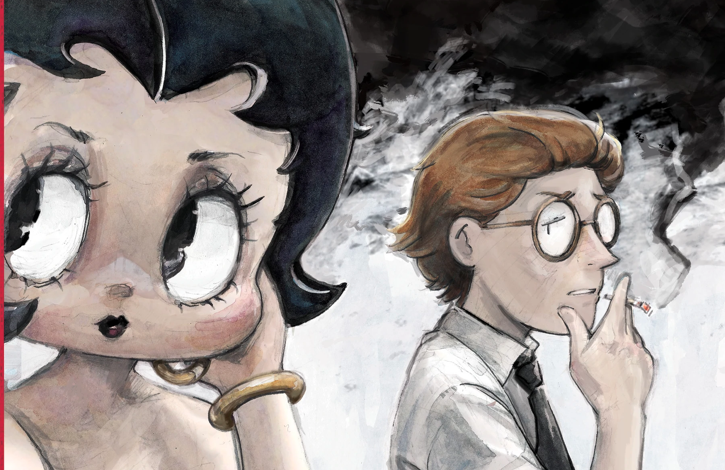
Alec Robbins really loves Betty Boop. That’s probably the most straightforward fact about Robbin’s Mr. Boop. From there, Robbins and his book just get… weird.
Here’s the premise of this book: Betty Boop is the cartoon character and Alec is married to her. Alec thinking “My wife Betty Boop is really hot,” is the first thing we see in this comic, cartoon hearts floating all around his and Betty’s head. He’s infatuated with his wife and she’s completely in love with him but it’s a weird love happening here. Any other two people and we would be worried about this deep codependency that both of them exhibit toward the other. Alec’s so scared that he’ll do something crazy like divorce her that he gives his divorce lawyer a gun to use on him if he ever wants a divorce her. “… if I ever come in here and tell you I want a divorce from my wife Betty Boop I need you to shoot me clear through the skull with this pistol” he instructed his divorce lawyer. He’s not getting a divorce but he already knows what lawyer he would hire if he ever did? But these must be the type of things you think of when you’re married to Betty Boop.
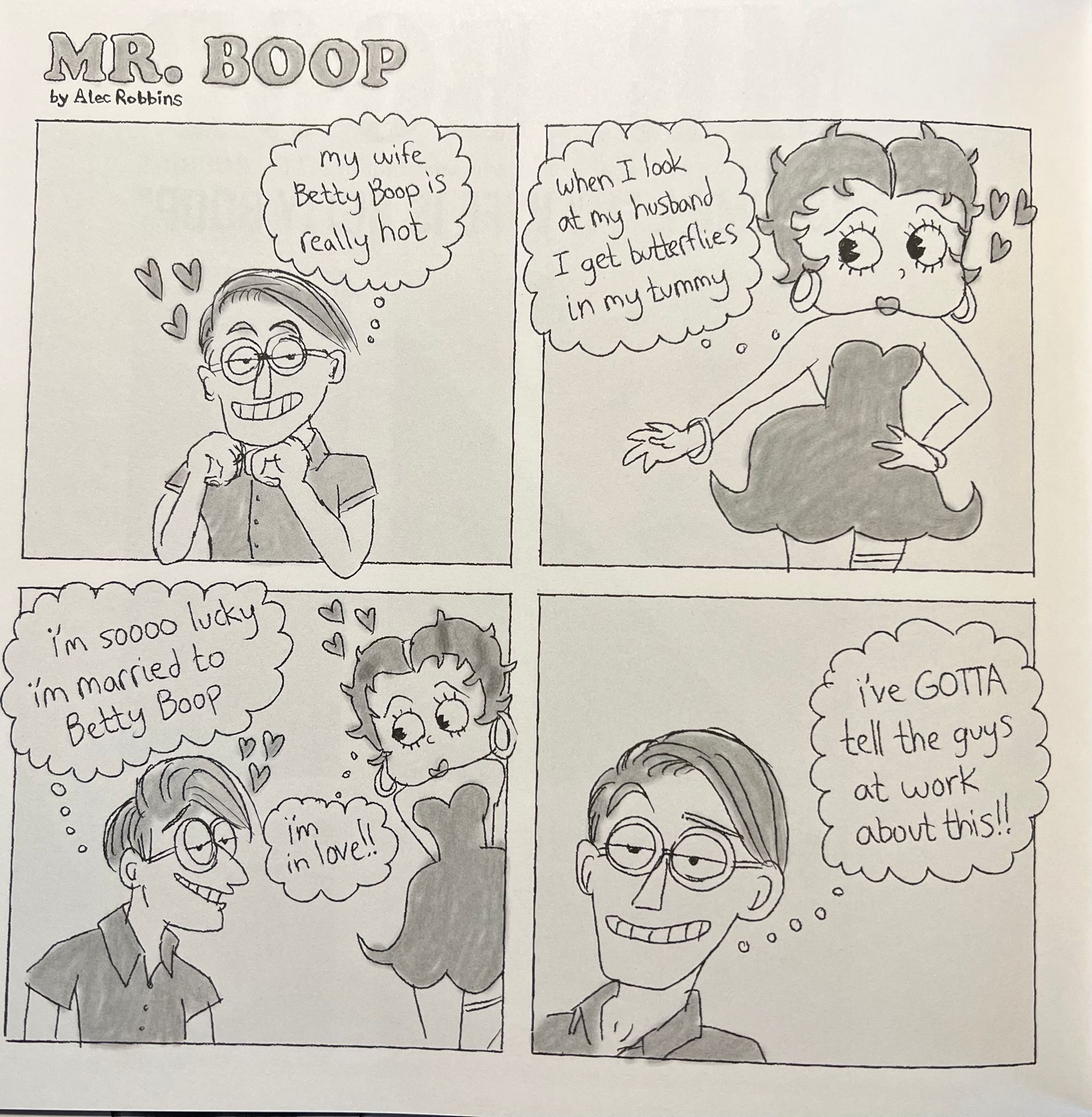
Well, that and how can you sexually satisfy a cartoon character who happens to be your wife?
And the answer to that sticky dilemma is “Threesome.” Want more details? “Threesome with Bugs Bunny.”
Occasionally I write things that I can’t believe are strings of words that I have to use a keyboard to put together. “Threesome with Bugs Bunny” is up there on the list of those things. But all of the preceding text should give you an idea of what the book is or at least the starting point of the book.
So what does it mean that Alec is married to Betty Boop and engages in threesomes with Bugs Bunny? It’s a strange sense of humor that Robbins displays; it’s touching and disturbing all at the same time. The way he draws Alec, Betty, Bugs, and a host of other cartoon characters is crude, both in the depth of the drawing and in the subject matter. The somewhat ironic leer of Alec and Betty, when they’re thinking about the sex that they’re going to have, flaunts children’s characters as sexual objects. It’s not sexy but it’s sexual if that makes sense. Robbins takes these children’s characters and reframes their existence around adult things. What’s more taboo for children than sex?
So on the surface, this is a cartoonist playing around with subverting our expectations of these characters. Peter Griffin from The Family Guy, Sonic the Hedgehog, Mickey Mouse, and a whole mess of other characters show up to join Alec and Betty in their sexapades and that’s Robbins pushing to see what he can do and what he can get away with in these characters that are all icons in their own, different ways. They’ve gone from our TV screens and game screens where they have relatively innocuous adventures into these outrageous and unimaginable (at least for the characters) situations. It’s edgy and dangerous. Ooh, what would Walt Disney think of Mickey being part of a threesome, his dick hanging out for all to see? And if the comics remained operating on that level, they would be some juvenile fun, something to nudge-nudge, wink-wink at, and then move on to the next book on your to-read pile.
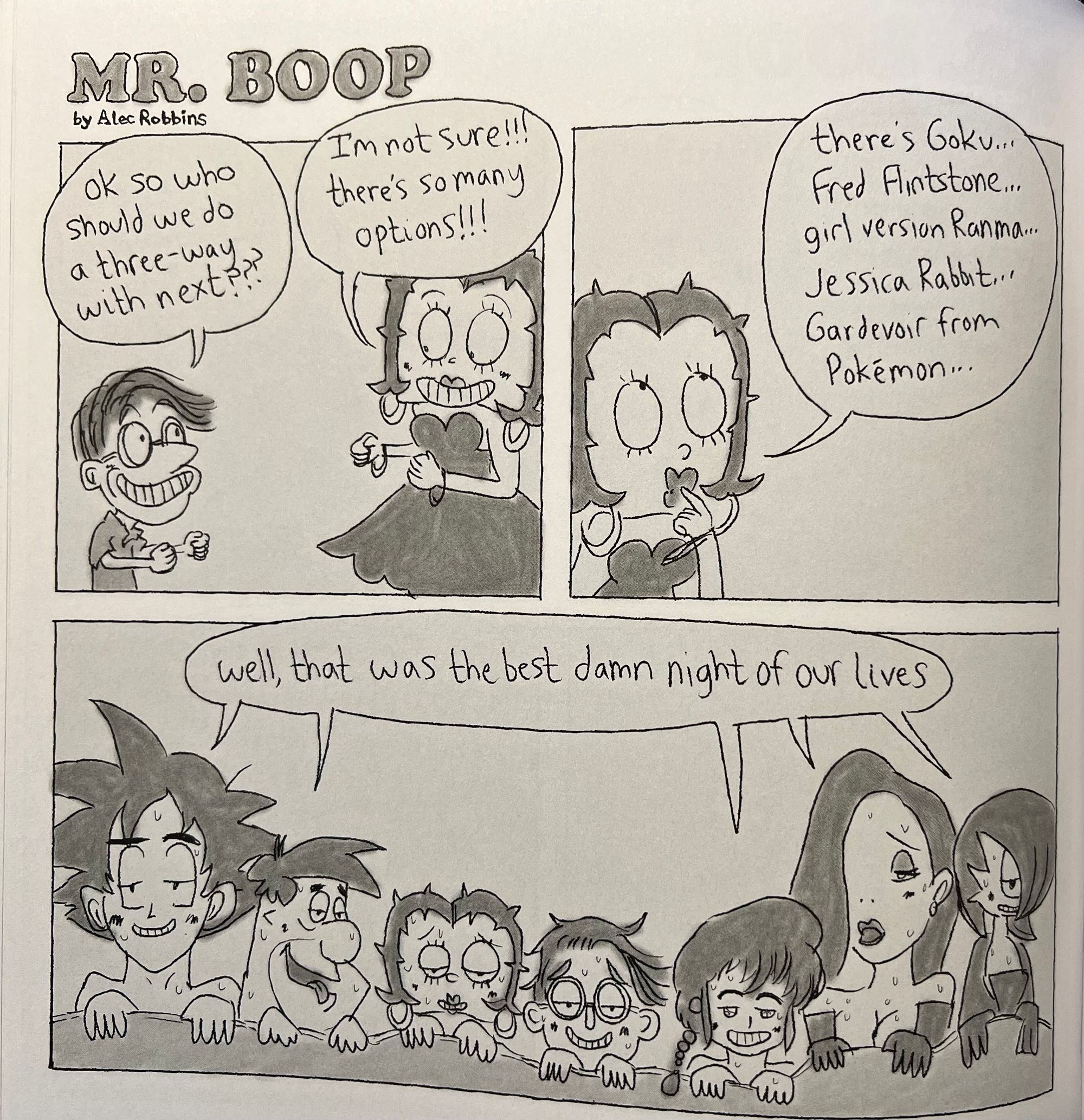
But Robbins is smarter than that. Maybe it started as a juvenile joke of “I’m married to Betty Boop” but his stories become about more than just the sex that Alec and Betty have. A disclaimer at the front of the book reads, “No Lawyers Beyond This Point!!!!!! Disclaimer: This comic is based entirely on true events. Any resemblance to fictional cartoon characters is a complete coincidence. I really am married to a woman named ‘Betty Boop.’ If, for whatever reason, you refuse to believe that, let’s just say that this is all a big parody or satire or something. Okay? Thank you.” That’s almost the usual boiler-plate stuff that appears in any work of fiction with one change. Instead of citing a resemblance to “fictional cartoon characters,” the fine print usually reads “any resemblance to actual persons, living or dead…” because, unlike those actual persons, there’s this thing called trademark and the idea of ownership over those cartoon characters that supposedly protects the owners’ rights to these characters.
Warner Brothers owns Bugs Bunny. Disney owns Mickey Mouse. Fleischer Studios owns Betty Boop, or at least the name “Betty Boop.” More importantly, Alec Robbins doesn’t own any of these characters.
After we see all of the love and sex between Alec and Betty (he even returns from near-death to be with her,) the third part of this book see’s Betty’s father Mr. Boop (wait, wasn’t that Alec?) return to Betty’s life, serving Alec with a Cease + Desist order for “illegally marrying our intellectual property.” He forces Alec and Betty to divorce because Alec doesn’t own her and this is where things start to get interesting and more sticky.
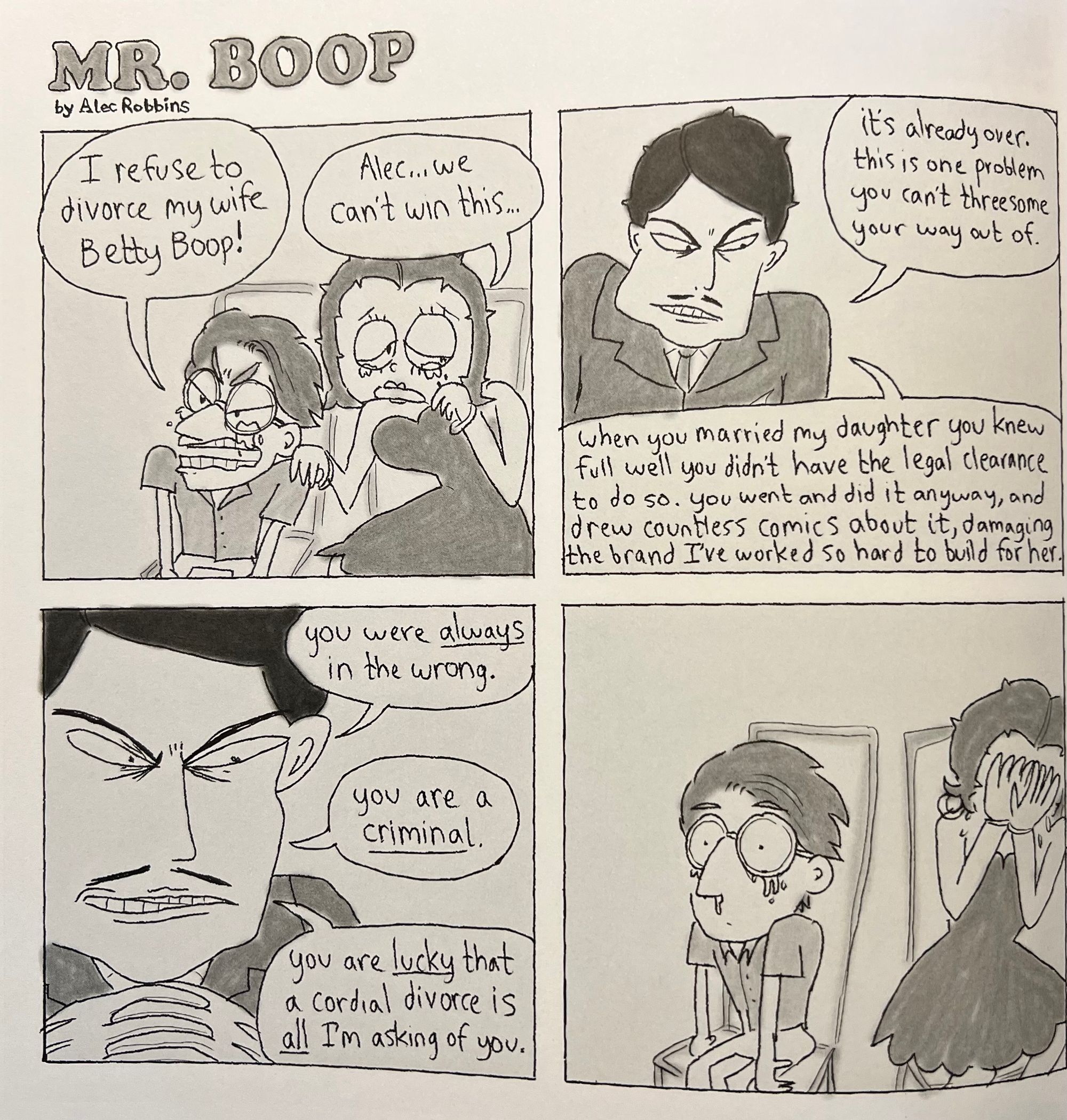
From the first four-panel strip, Robbins walks a fine line of how far he can take his joke. For half of this book, it’s a fun and mostly funny romp through Alec and Betty’s married life. Sonic the Hedgehog shoots Alec because Sonic isn’t invited to a threesome when everyone else is. It’s that kind of humor that you either chuckle at or don’t. But even then, there’s something exploring possession and ownership upfront. “My wife Betty Boop is really hot.” It’s nothing out of the ordinary to refer to a spouse as “my wife” but “my” is possessive. The book opens with a word signifying possession. And we don’t necessarily think about it when it’s an actual person. “My wife is really hot” signifies that it’s my wife and not your wife I’m talking about here.
But “My wife, Betty Boop…” is a bit more of a loaded statement. Alec is saying it so he’s implying his possession but it’s of a cartoon character and those are usually trademarked by large corporations. But with that implied possession of the character, Robbins (and we’re probably mixing the cartoonist’s rights to the character here with the character Alec’s marriage to Betty (it’s all kind of messy)) is assuming some kind of ownership over the character on multiple levels that’s kind of dizzying to think about. And as the other characters walk in and out of the story, there’s not that kind of ownership over the characters. Robbins gives them some slight agency outside of these twisted relations; Bugs Bunny, and Peter Griffin hold down jobs at a Subway while Sonic tends a bar— it’s not much agency but it counts.
So the second half then becomes more of a mediation on the ownership of Betty as her father Mr. Boop enters the picture and wants to assert his control over her to capitalize on her popularity, using the wealth and power of a big corporation behind him to push the little man (Alec) around and force a divorce. It’s a forced breakup, the story of a strong unapproving father but also the story of corporate power and greed. It’s the way that Disney “protects” their characters. So when Mickey ponders the forced breakup of Alec and Betty, he concludes “Walt Disney really hates it when I, Mickey Mouse, participate in orgies.” Not the kind of thing you would ever hear from Mickey on Disney Plus.
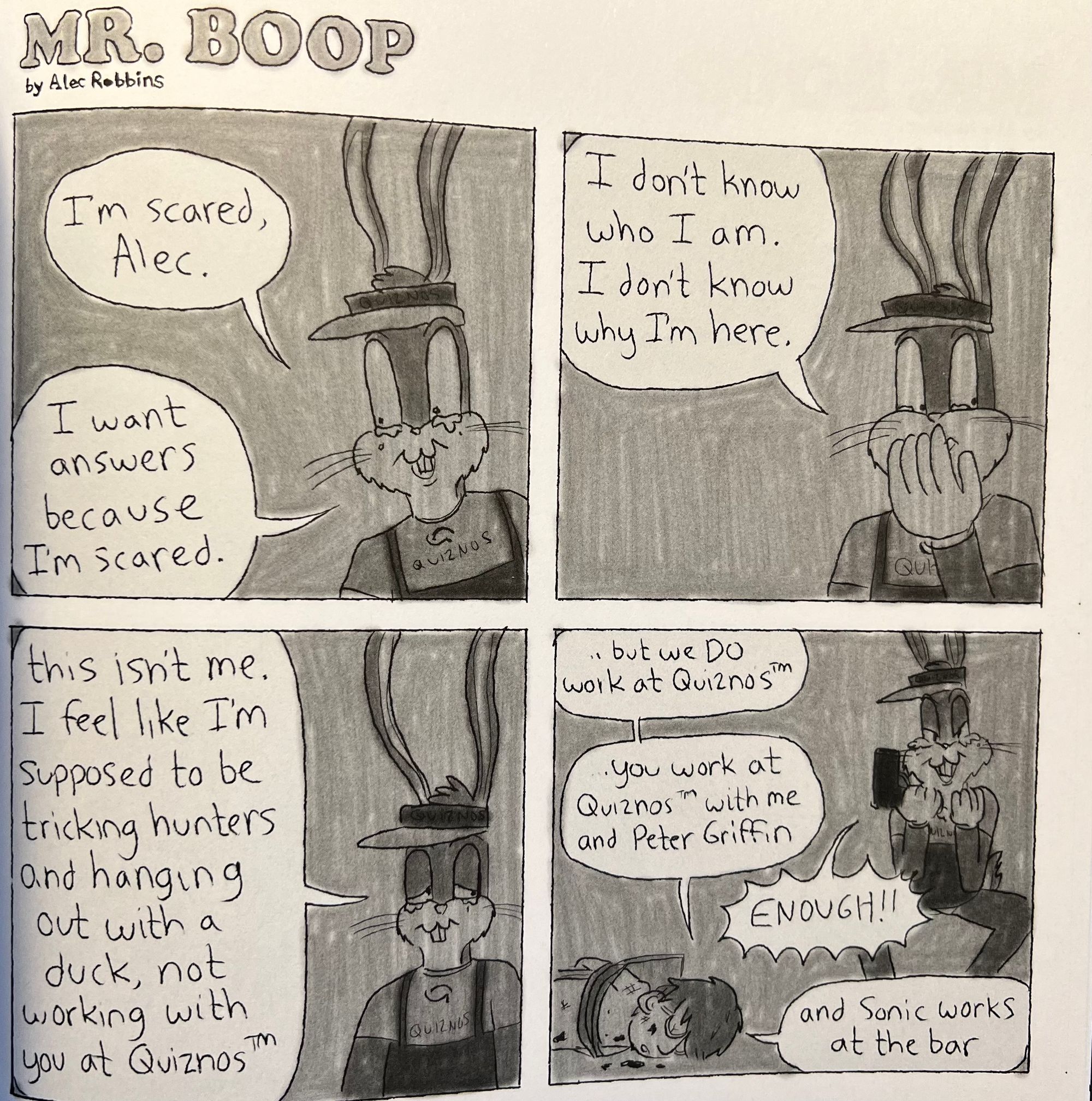
The final portion of the book shows Alec trying to manifest his new girlfriend into becoming Betty Boop in a way where you start to question Robbins’ own involvement in this story and how autobiographical it may be. And that’s part of the magic of this final part, where you almost start to question how much of this was performative art and how much of it was Robbins mining his own experiences for this story. A large chunk of the book, while claiming to be real and autobiographical, is performance, Robbins putting on a show to shock and entertain his audience and himself. And that stuff feels like it’s either something you’ll laugh at or you won’t. There doesn’t feel like much room for a middle ground here.
But the last quarter of the book becomes reflective and probing of Robbins’ fascination with Betty Boop, all of these other characters, and even his own interactions with entertainment as the ending of the book owes a lot to Neon Genesis Evangelion, which comes at us almost out of the blue. The climax of Mr. Boop is both Alec and Robbins searching for a kind of peace to come out of everything that has led up to the ending. It’s a cathartic ending for all involved, including the reader who gets to say “goodbye” to Robbins’ almost epic tale of love, possession, and cartoon threesomes.
I’ve come away from this book believing that Alec Robbins really loves Betty Boop, as well as Bugs Bunny, Peter Griffin, Sonic, and maybe even Mickey Mouse. He loves the characters enough that Mr. Boop is his attempt to rescue them from their corporate overlords and reclaim their stories as his own story. It’s a type of fannish desire to be involved in the fate of these characters, both as characters and as properties. He (and we) want to protect them so what better way than trying to marry them and make them family? It sounds like a nice wish for these fictions that we Robbins also takes it through to the almost inevitable end of that fanboyish desire threatening to overtake every aspect of our lives. Mr. Boop is both a love letter but also a warning– love what you love but maybe know when to let go as well.
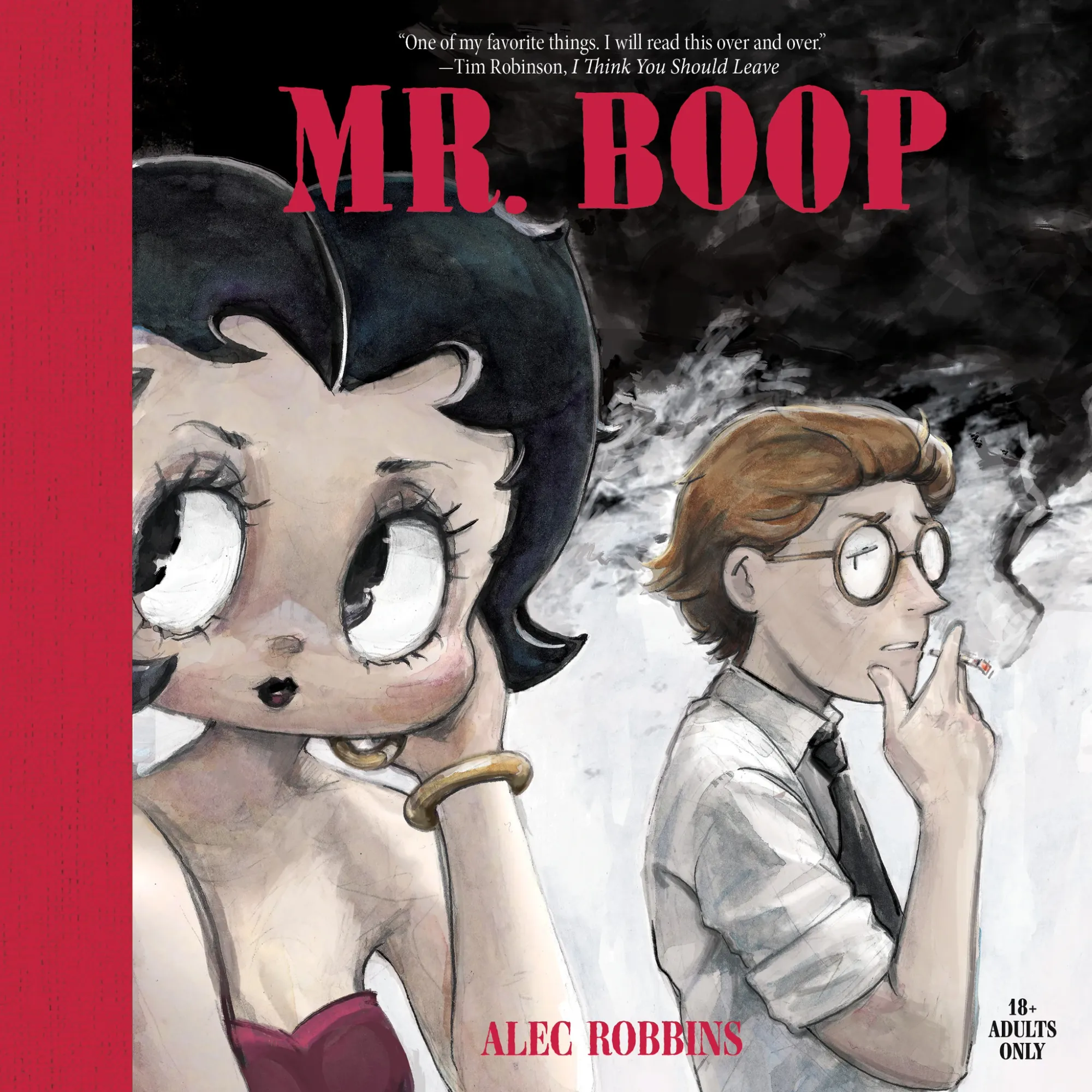


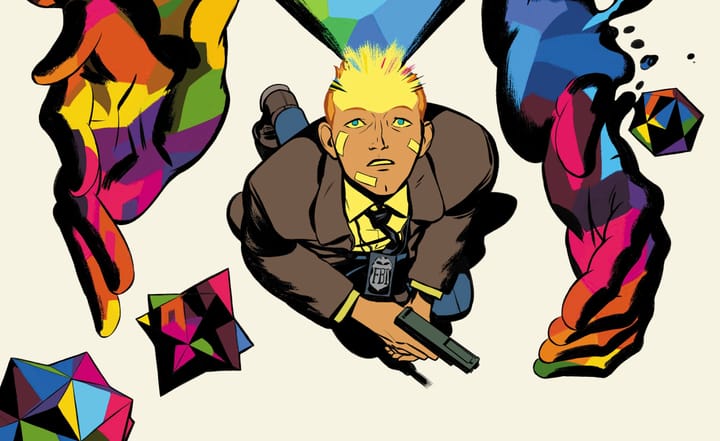
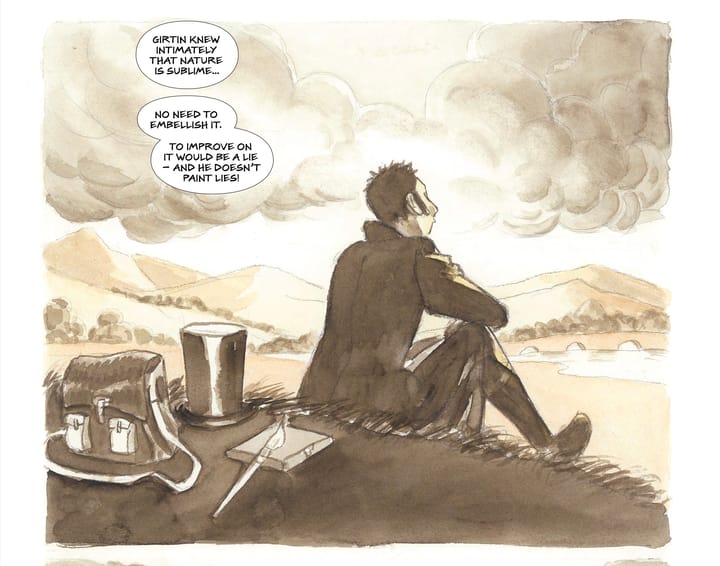
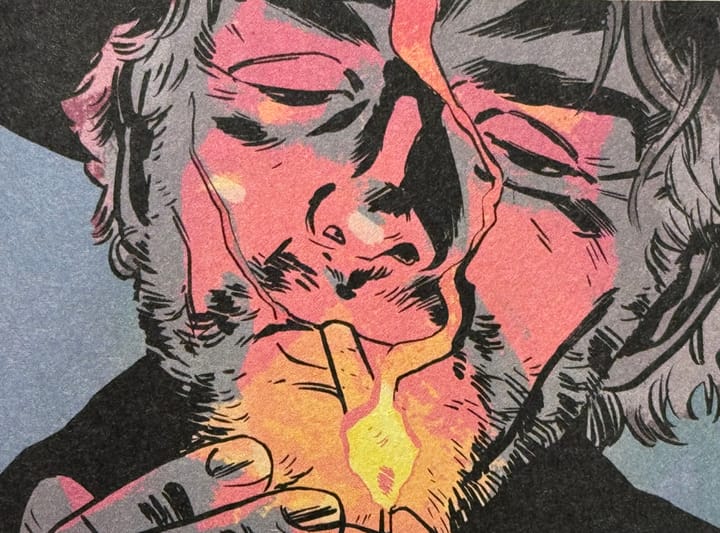
Comments ()